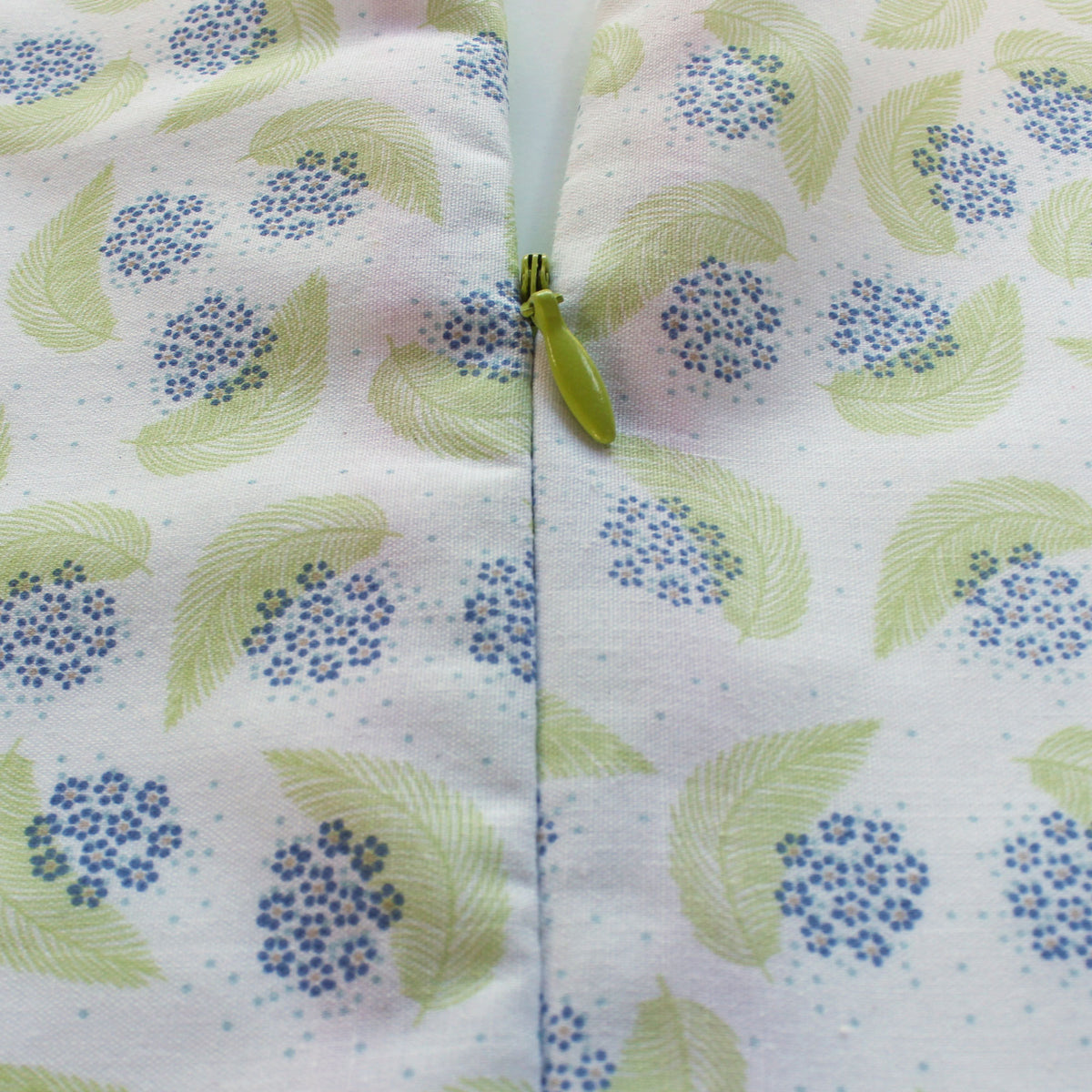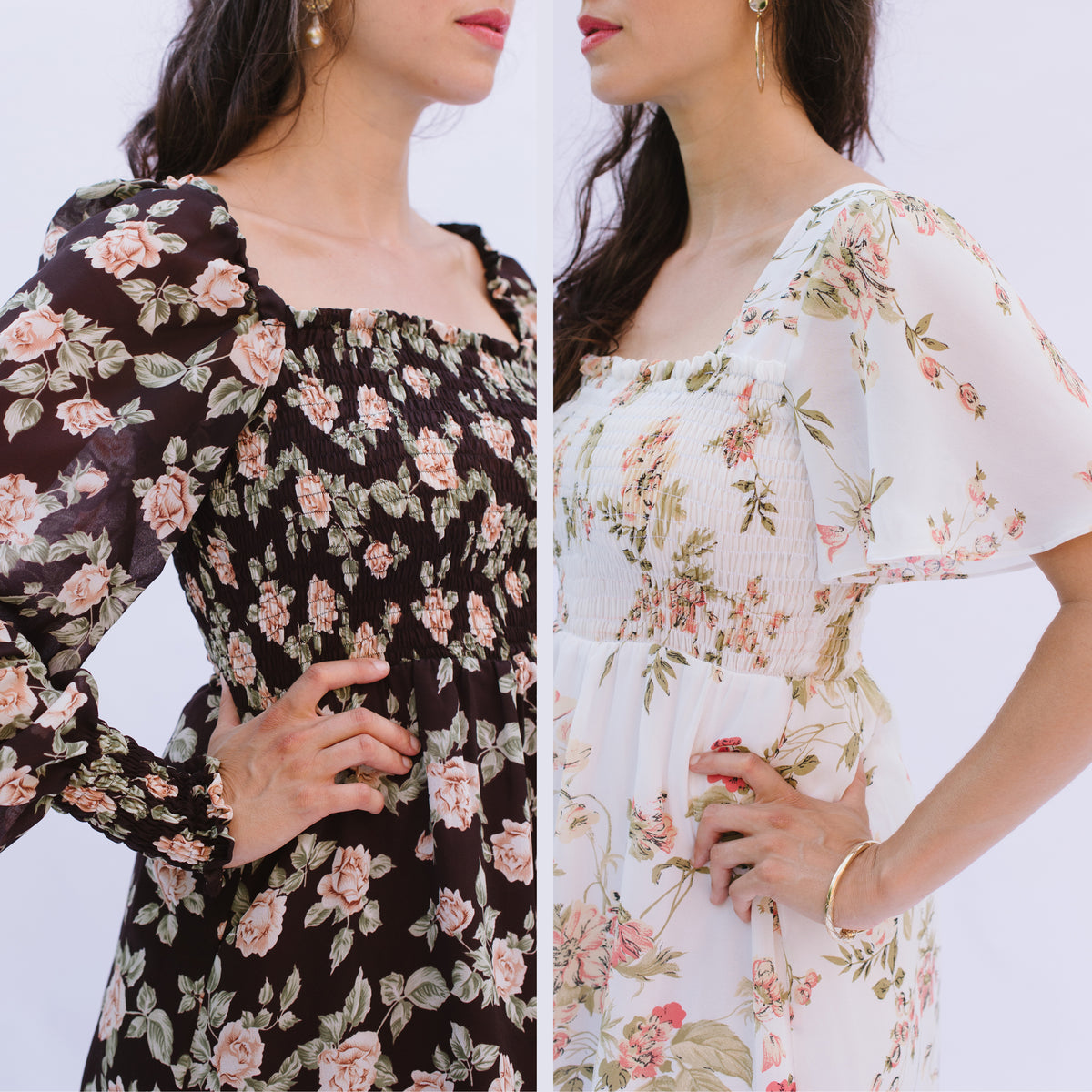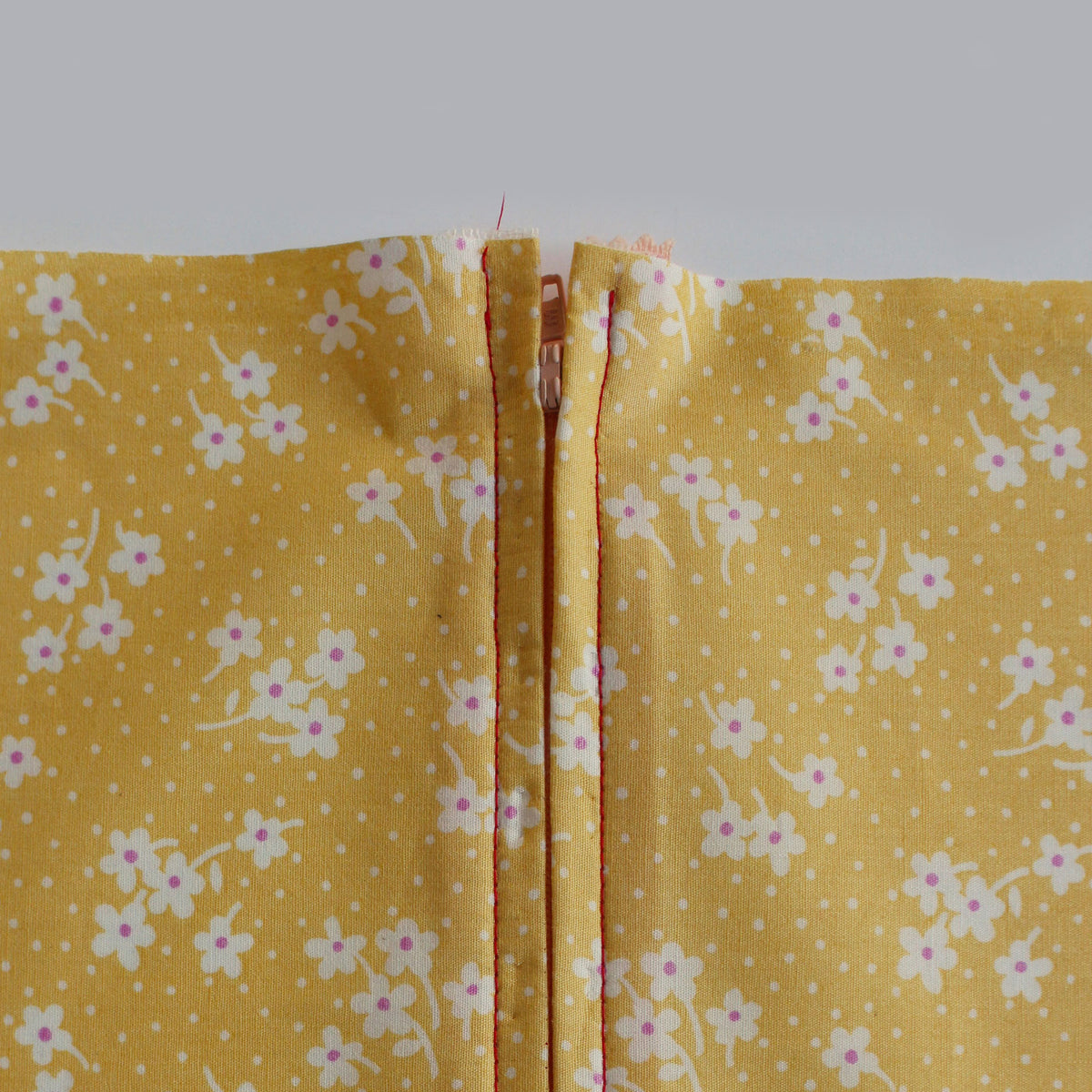
Sewing with knits can be daunting; the fabric moves very differently from woven fabric and the small seam allowances means that you have to be really tuned in when sewing. However, with a little practice, you'll soon find that knits aren't as challenging as you once thought. The serger machine makes projects fast, but if you don't have a serger, don't let that stop you; a sewing machine can also be used to create your knit project.
In this post, we'll talk about tips that you can use to get comfortable with serging or sewing knits. You'll also learn how to set up the sewing machine for a twin needle.
Regardless of which machine you use, there are a few tips that you should know before you get started:
- Use a ballpoint sewing needle. You can also use a stretch needle, however, these are designed more for use with 4-way stretch fabric that has a greater percentage of stretch. The tips of these needles are specially designed to part the knit weave, preventing it from creating runs as you sew.
- A twin needle is used with a sewing machine to mimic the finish that you would get with a cover stitch machine. The result is two lines of straight stitching on the right side for the fabric and a zig zag, formed by the bobbin. This allows the stitch to stretch. I prefer a 1/4" (6 mm) twin needle for hemming knits.
- When beginning to sew a seam, hold onto the tail threads underneath the foot as you sew. This will help to feed the fabric through and prevent it from puckering as you being your stitch, or from getting pulled into the throat plate hole on your sewing machine.

- Place your project to the left of you on the table as you sew, instead of hanging off the table. This will help prevent strain on your fabric.

- Pressing knits: as always be careful to set the iron to a heat setting that your fabric can tolerate. Many knits have a synthetic fibre, which can melt, so make sure to test your scrap fabric first. I also use a damp press cloth or a piece of muslin. This protects the fabric and helps to steam set the seam.

Other tips:
- If your fabric edge is curling, you can spray it with starch to stabilize the edge. For the stitches that I have suggested using, the stretch is built in. Therefore do not have to stretch as you sew.
- On a sewing machine, you can also use a walking foot attachment which will help provide an even feed for the fabric.
- Stretching the fabric as you sew can result in wavering seams.
- Pressure foot tension can be adjusted to provide less pressure on knit fabric, therefore preventing it from rippling as you sew. Try adjusting your tension to 1 or lower and see how it works with your fabric.
Serger:
Set your machine up with 4 threads. On scrap fabric, test your stitch to ensure that your tension and stitch length are correct and that the differential feed is adjusted for your fabric. This image below shows the fabric sewn with varying differential feed settings. You will see the fabric edge on the right wavering because the feed is set too low. Make sure to adjust your differential feed to that your fabric lays flat when serging.

Since the seam allowance is 1/4" (6 mm), there will be no need to trim the fabric with the blade. Your serger sewing platform should have a mark that indicates 1/4" ( 6 mm). Determine where that mark is on your machine and make sure to align your fabric edge to it as you serge. If you like, you can place a piece of tape along the 1/4" (6 mm) seam allowance guide to make it more visible during construction.

Make sure to remove your pins before reaching the blade. If the blade comes down over the pin, it will become dull and give trouble trimming the fabric.

There will be a few steps in the instructions that call for the use of a sewing machine, so make sure to read about stretch stitching with your regular machine as well.
Sewing Machine:
Many people have the idea that if they don't own a serger that they can't sew with knit. Well, it's just not true. A regular sewing machine can sew beautifully on knits too. Each machine model is different and comes with their array of stitches. Since some machines as more basic than others, I've kept the stitch setting for this machine simple so that it is accessible to everyone.
We'll talk about stitch options and settings shortly, but first, let's talk about the seam allowance for this project. As mentioned before, the allowance is 1/4" (6mm). On our guide plate or throat plate, we use the allowance marks to align our fabric. The first whole line on the plate 3/8" (1 cm) and the 1/4" (6 mm) mark is covered by the pressure foot; only a very small portion of the line is visible for fabric alignment.
If you feel confident following this 1/4" (6mm) guide plate line, then, by all means, go for it. But if you would like a bit more guidance, here's a tip for you...
Move your needle over to the right-hand position. This will now allow you to align your fabric edge to the 3/4" (2 cm) line. The seam allowance will still sew at 1/4" (6 mm) since we have moved the needle over by 1/8" (3 mm).
Ok, now let's talk about stitch settings. For each setting below, I've suggested width and length settings but each fabric and machine may call for a different setting. Before sewing your project, test each one out to see how it performs with your fabric and adjust the settings as needed.
Stretch Stitch:
Different models of machines come with various kinds of stretch stitches. Some of these stitches overcast the seam allowance as it sews. One stitch that is very common, however, does not provide an overcast, looks similar to a zig zag but it is designed specifically for stretch.
One disadvantage of this stitch is that it's very difficult to unpick if you make a mistake or need a fit adjustment, so if using it, you may want to baste first. If you are using a serger for this project, there will be a few steps in the instructions that call for the use of a sewing machine. Do not pull the fabric as you sew.
Setting: Stretch stitch
Stitch Length: 2.5 mm
Stitch Width: 1 mm

Narrow Zig- Zag:
A zig zag has the ability to stretch with fabric. For the purposes of sewing knit fabric, the width is at a narrow setting (1.5 mm) and the stitch length is a bit shorter that your regular length (2.2 mm). Test the stitch on your scrap fabric before sewing. Do not pull the fabric as you sew.
Stitch setting: Regular zig-zag
Stitch Length: 2.2 mm
Width: 1.5 mm
Regular Zig Zag:
I recommend this stitch for understitching or topstitching. In areas where there is bulk, such as the armhole binding or the neckline's understitch, this stitch will prevent the fabric from stretching out as you sew. Set your width to 3 mm and your stitch length to 2.5 mm. With scrap fabric, test an understitch with the zig zag.
Setting: Regular zig-zag
Stitch Length: 2.5 mm
Stitch Width: 3 mm

Since knits do not fray, it isn't necessary to finish the edges, but if you would like to create a neat finish, you can sew with a regular zig-zag along the edges.

Twin Needle:
This double needle creates a stitch similar to a cover stitch and is ideal for hemming a garment or edge stitching binding. You must sew with the right side of the fabric facing you. This needle produces a double line of stitching on top. A zig-zag stitch forms automatically on the bottom, which allows the stitch to stretch. You must use it with a zig-zag foot. When sewing with knits, use a ball point or stretch twin needle. Set the stitch length the 2.5 mm. Test the stitch on your scrap fabric.
Settings: Straight Stitch
Stitch Length: 2.5 mm
Stitch Width: 0 mm

Twin Needle set up:
Setting up and threading the machine for a twin needle is a little bit different that when threading the machine for a single needle. Let's go over it...
It is best to use two top spools when sewing with a twin needle. But in the event that you're using thread from your stash and don't have two spools of the same colour, here's a little trick. You can wind a second bobbin with thread and use it in place of your second spool.

Another snag you may run into is if your machine doesn't have a second spool holder. Mine only has one, so I place both my bobbin and thread spool on the single spool holder. The thread trick mentioned above also comes in handy if this spool limitation applies to you because you'll be able to fit a bobbin and a spool on one holder.

Take the two threads in your hand, keeping them separate as you thread the machine. As you thread, do not allow the threads to cross over; keep the left thread on the left and the right thread on the right.

Now, here's the important part. Your tension disk has a plate that needs to divide these two threads. Make sure the left thread goes to the left of the plate, and the right thread goes to the right of the plate.

Continue to keep the left and right thread separated after the tension disk is threaded.

My machine has two thread guides above the needle, so I keep the threads separated here. If your machine has only one thread guide, no problem, just keep the left and right thread to either side.

Thread the left and right needle with their respective threads.

Next, make sure that your needle position is set to the middle.

You must use a regular zig-zag foot. This is important because the hold where the needle passes through must be wide enough to accommodate two needles.

Set your machine to straight stitch. I once forgot that I had my machine set to zig-zag and I broke my twin needle on the first stitch because it hit my foot. Yikes!

Ok, you're all set for the twin needle. You may want to practice sewing with this needle before we get started. Fold your fabric towards the wrong side at 3/4" (2 cm) and press. When sewing, the right side of the fabric will be facing up.


YOU MAY LIKE:











